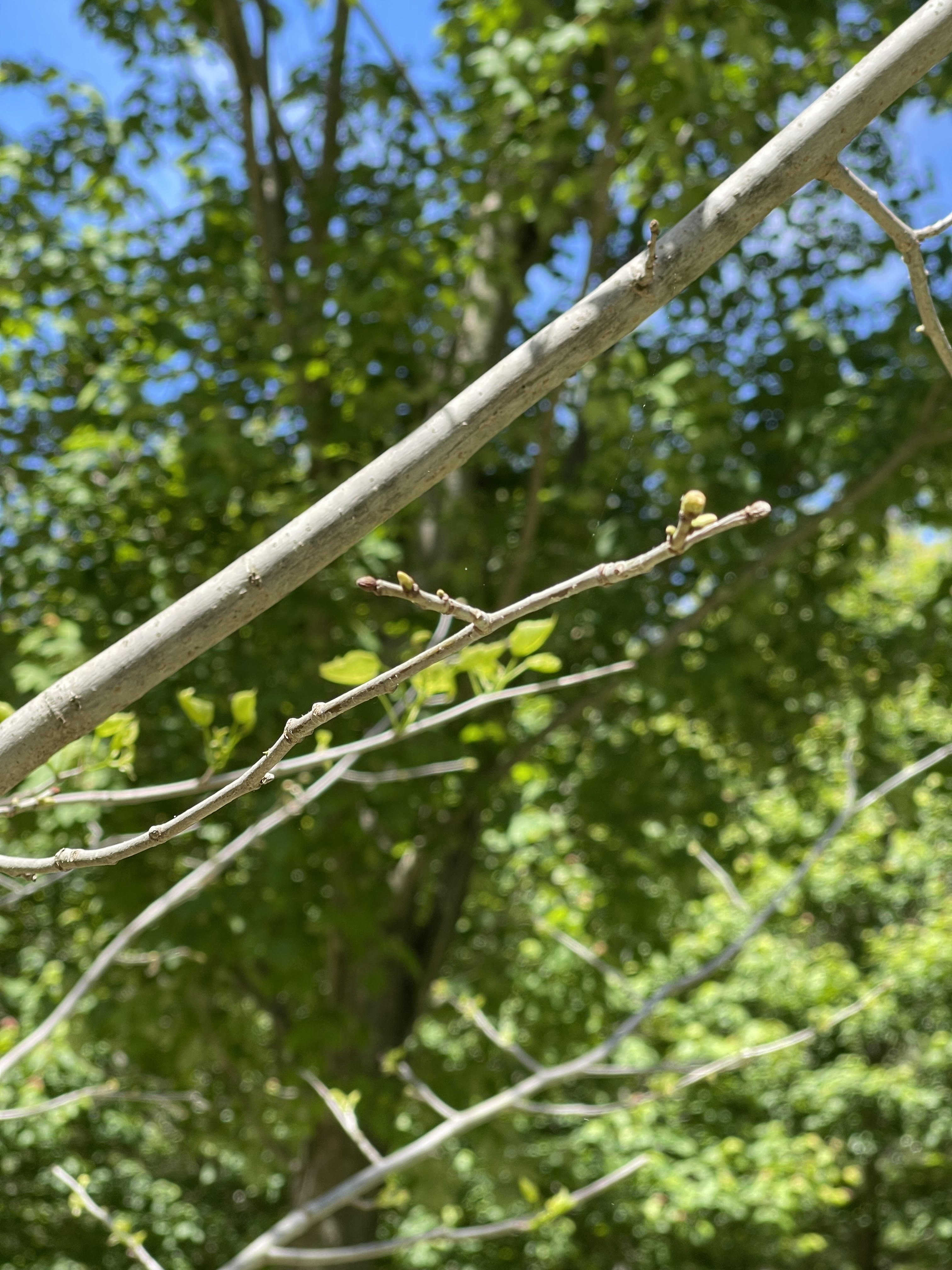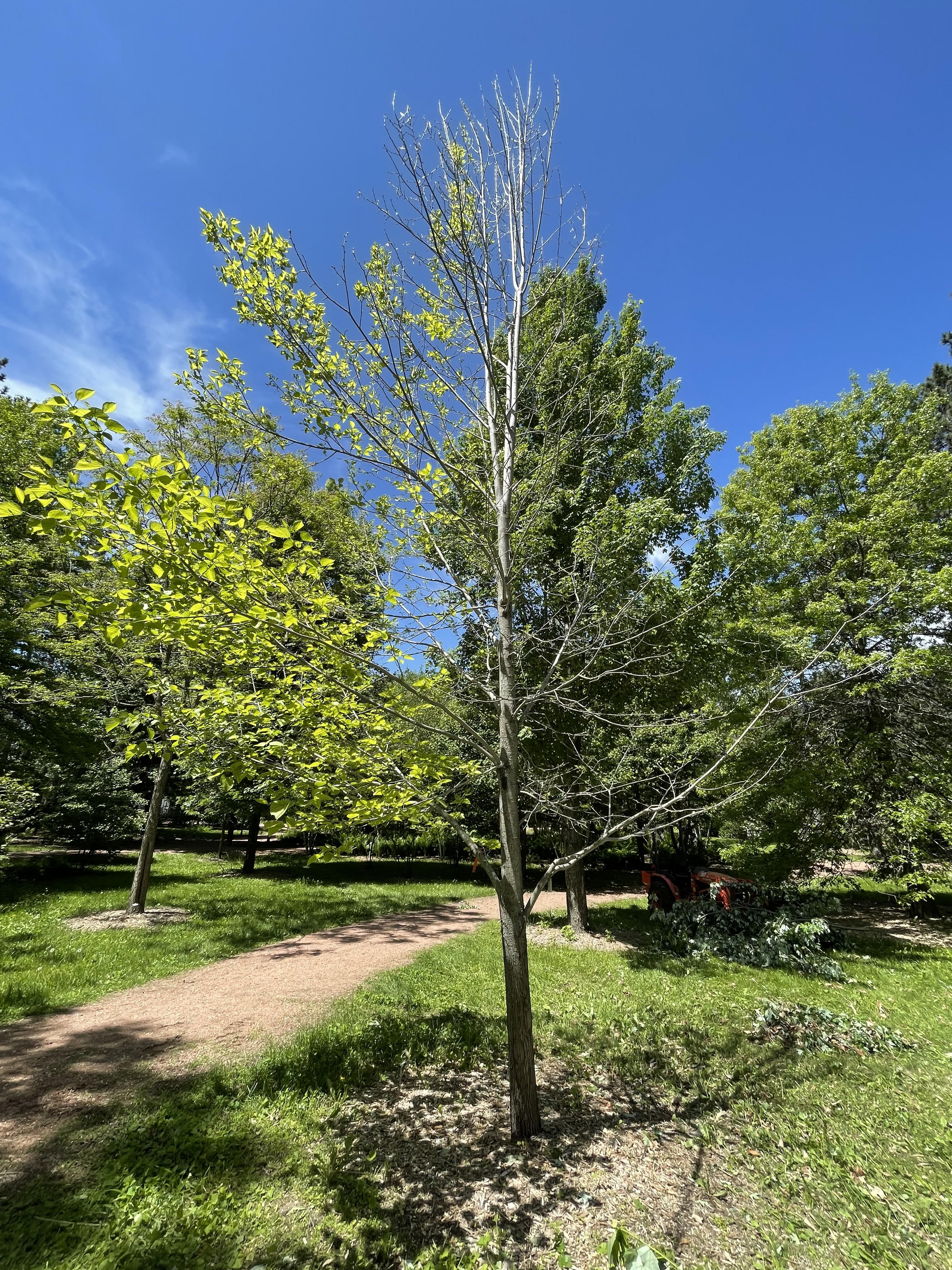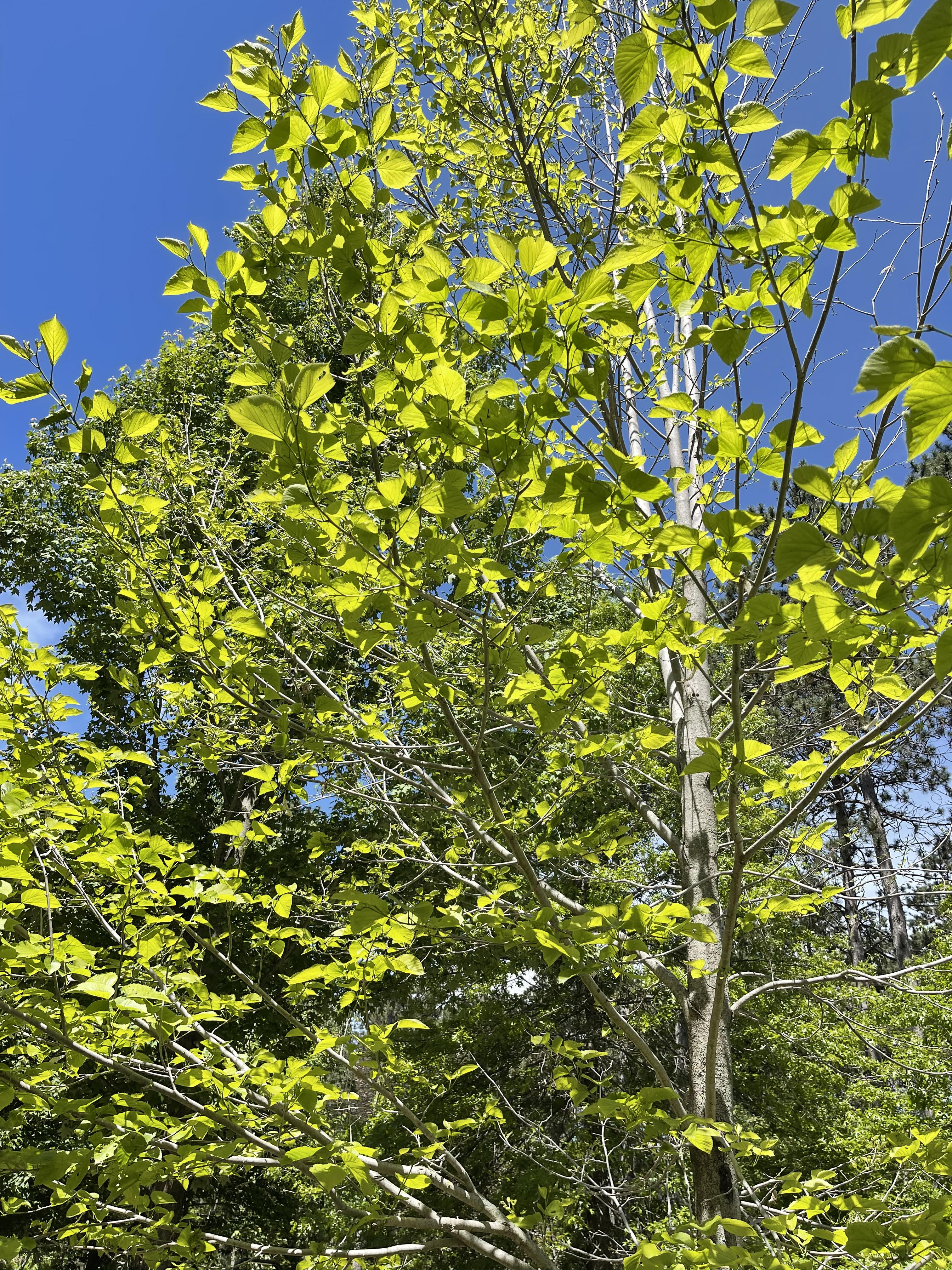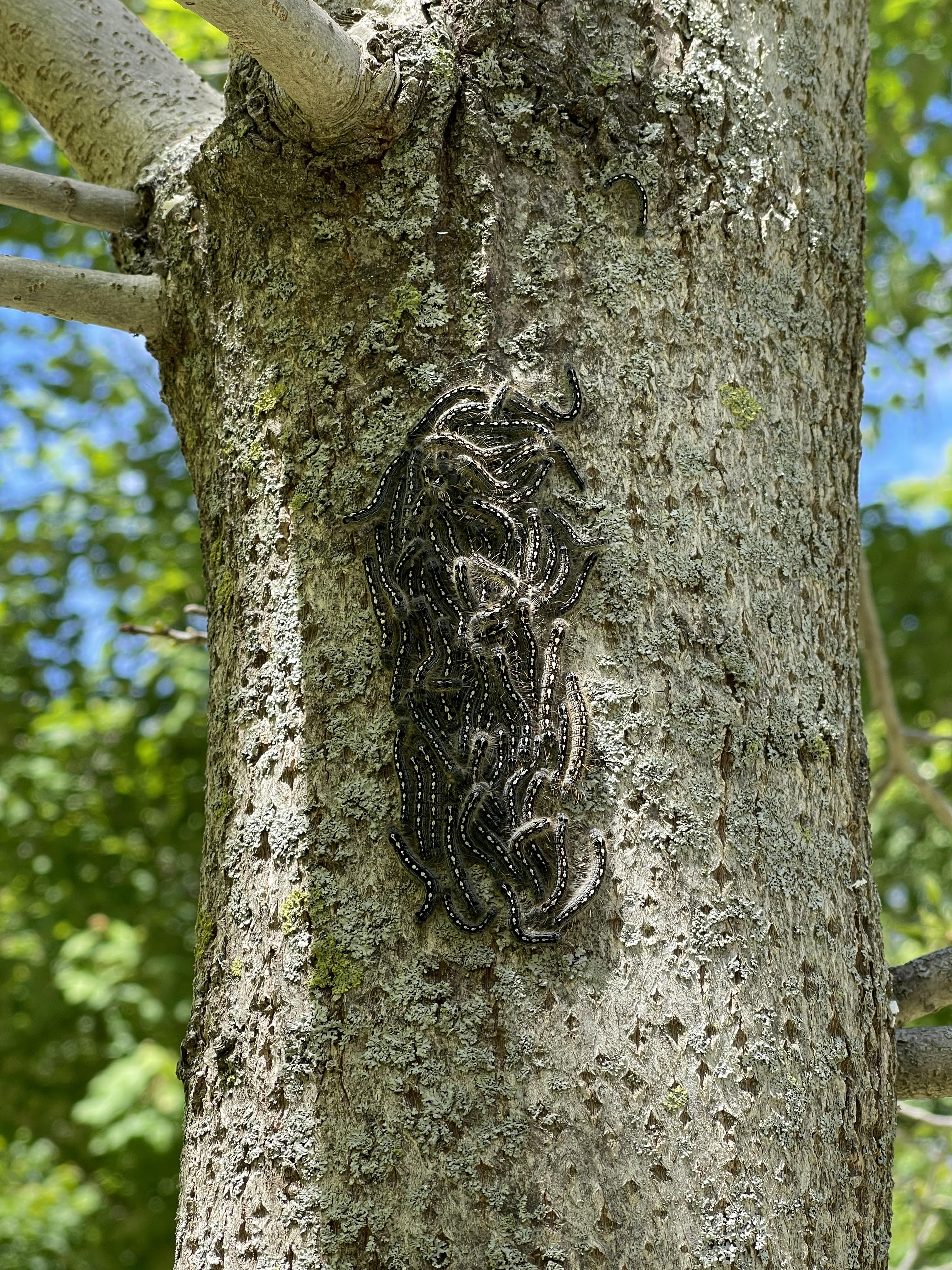The trees are all exploding with millions of photosynthesis factories which can only mean one thing – it’s summertime! Leaves do not get enough credit for all they do. Leaves provide habitat, a source of food, protection from the sun, natural fertilizer to the soil, clean oxygen, and much more. The presence of leaves is an indicator that the vegetation is healthy and thriving in its environment. When leaves are absent in the summer months, most people might assume that the plant is dead, yet that is not always the case.
Around Monk Botanical Gardens, maybe even your yard, I have noticed that there are some trees that are losing their leaves. I was extremely concerned as to why there are so many trees dying. The other vegetation around these trees seems to be happy and healthy. It’s like this tree-targeting problem just arose overnight. I felt I needed to get to the bottom of this cellulose conundrum, so I did some investigating. I was able to conclude that the trees I was worried about are indeed still alive. All the bare branches have begun to re-bud to form new leaves, but I still did not have an answer to what caused them to lose their leaves in the first place. The most fascinating tree I found affected at the gardens was an American Linden (Tilia americana). This tree had full foliage on one half and newly budded branches on the other half. It almost seemed like this tree was going through two different seasons at the same time.

I was becoming very annoyed since I could not put my finger on what was causing the loss of leaves. Little did I know, I could actually touch the problem! A large black blob on the trunk caught my eye right as I was about to give up. As I moved closer, the blob began to move! This mystery mass was actually a wiggling clump of caterpillars.
These caterpillars are known as Forest Tent caterpillars. They are about 2-3 inches long and have distinct white dots that pop out against their full black bodies. Each segment of their body is bordered by a faint blue line, and they have little fuzzy yellow spikes encompassing their whole body. You will most likely find them traveling on the branches or in clumps on the trunk. They are a native species to Canada and the United States, yet they are normally only recognized when they have a massive outbreak every 6 to 12 years.
The larger larvae feed on the leaves which causes the partially or fully defoliated tree. It takes a couple of weeks, but the tree will begin to bud again just as it does in the spring. Those new leaves will most likely stay present since the larvae will have matured into moths. The same tree could become bare again if more eggs are laid.
This can be very frustrating to homeowners and business owners, so there are a few ways to regulate these leaf munchers. It’s common to see people power-washing the clumps off the trees, properly using insecticides, or simply cutting off the egg sacks before they have the chance to hatch. Truly anything that keeps the caterpillars from reaching the foliage will help! The Forest Tent caterpillars are naturally regulated since they are a perfect food source for birds, frogs, mice, and skunks. Extreme weather can also kill of the adults which results in less mating and reproduction.
Written by Horticulture Intern, Jenna Dedina




